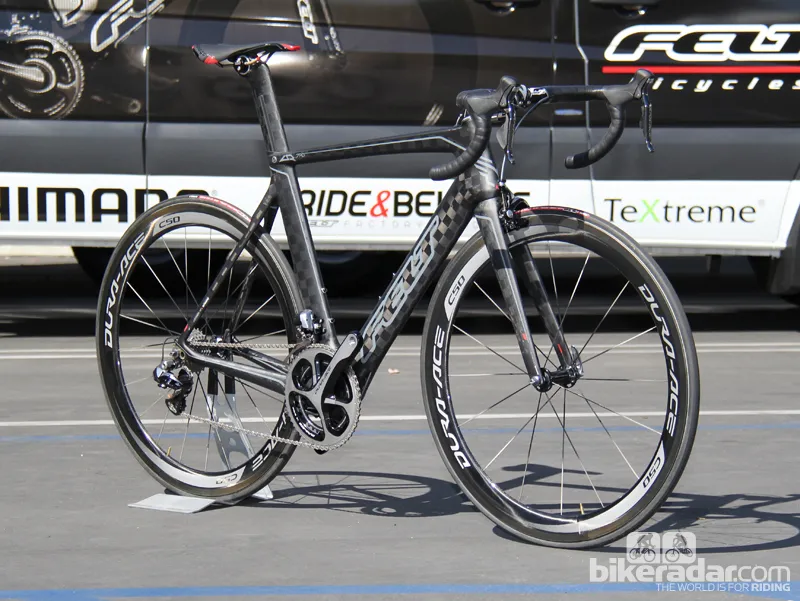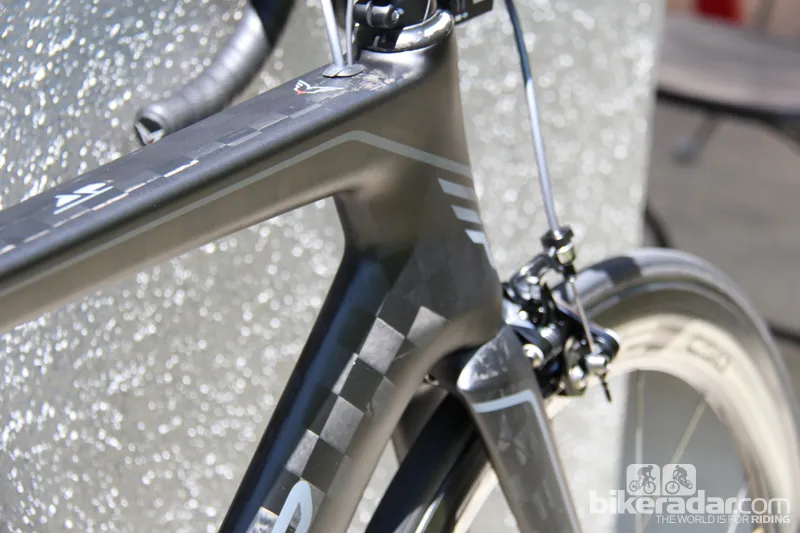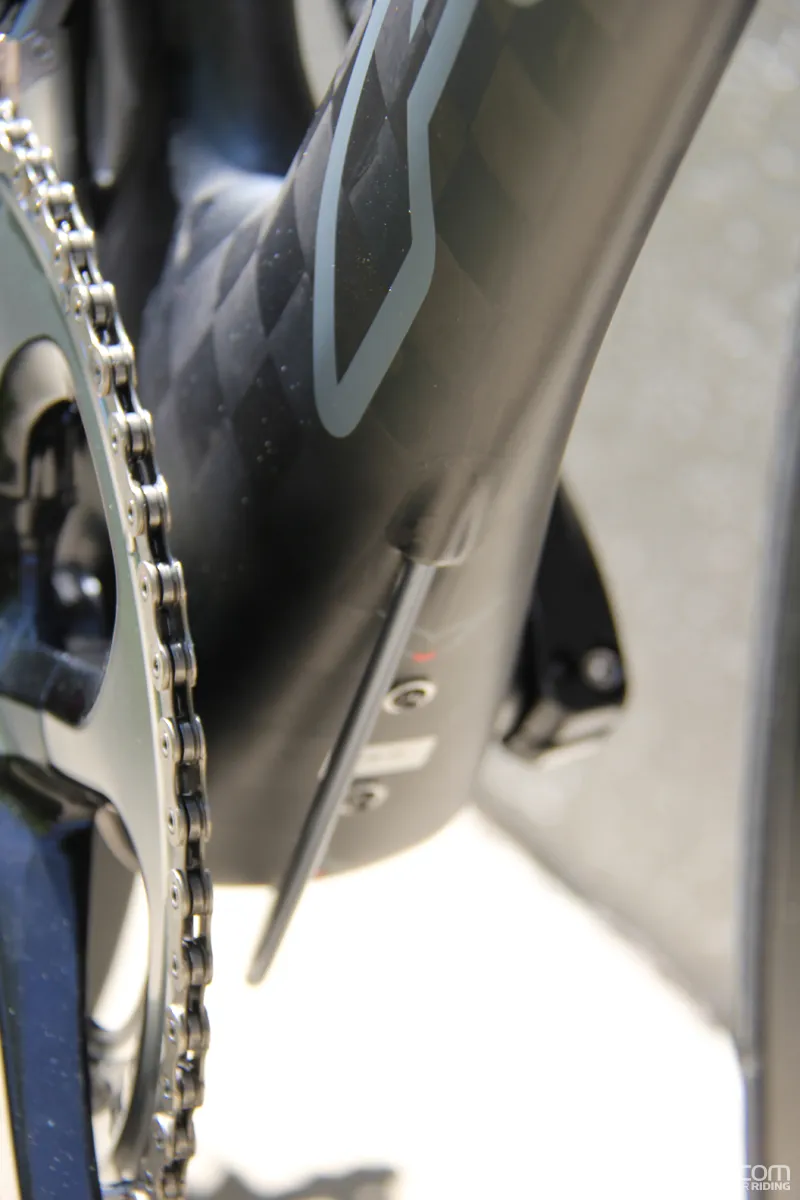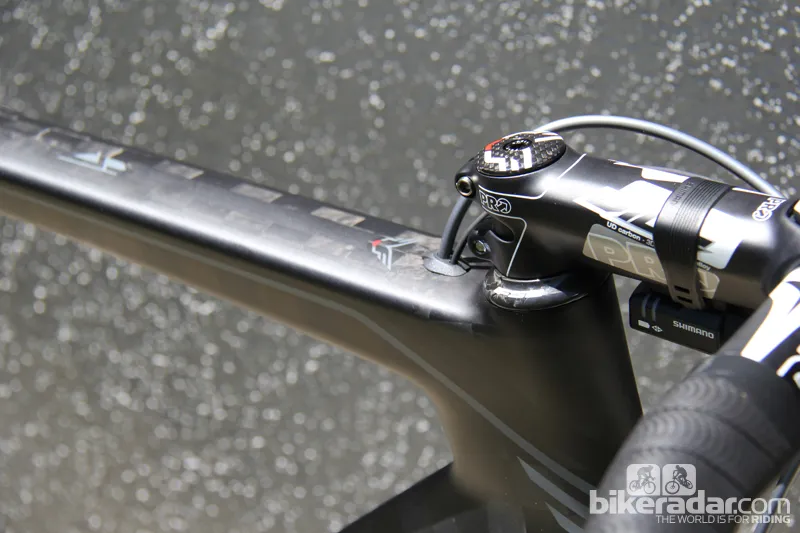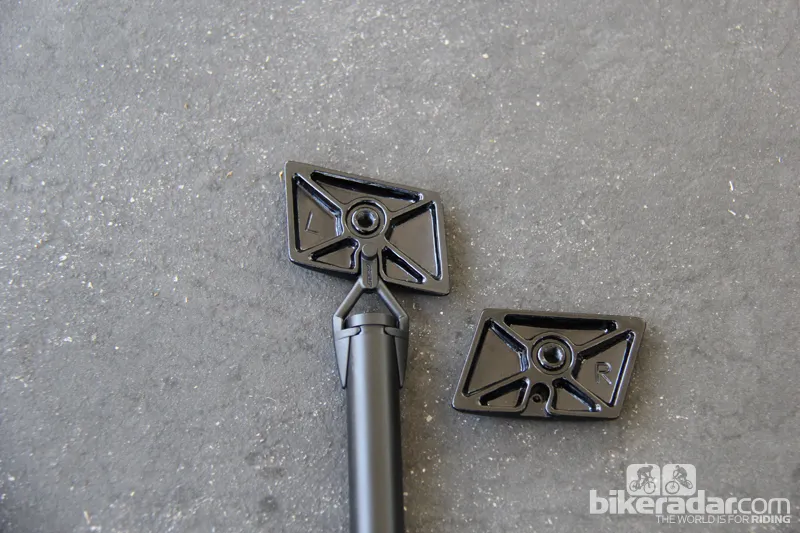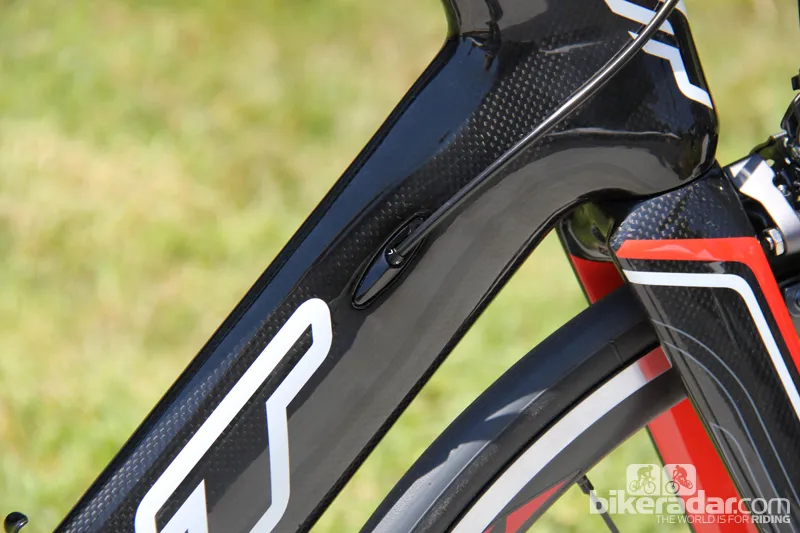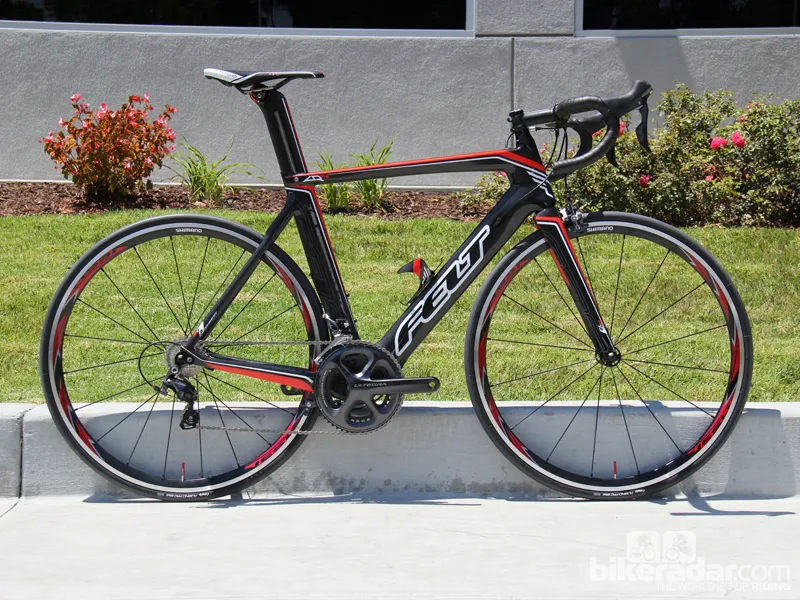The AR was one of the first aero frames on the market when Felt unveiled it at the 2008 Tour de France. The 2014 model builds on the success of previous versions in the usual ways – the company claims the latest bike is lighter, stiffer, and has better aerodynamic characteristics than its predecessors.
In addition to the expected revisions, Felt has also placed an emphasis on increasing ride comfort and making the AR frame a more versatile platform for riders looking to use one bike for road racing, time trials, and triathlon.
Flippable VariMount seatpost
Felt has a long history of producing wind-cheating triathlon and time trial bikes. The company realizes that not every weekend warrior can afford a quiver of high-speed machines for each and every discipline. On the other hand, Felt engineers understand that attaching clip-on aero bars to a road bike does not transform it into a capable time trial or triathlon racer.
The 2014 AR addresses this with the incorporation of a new, variable geometry seatpost. The VariMount seatpost can be flipped to provide a traditional road racing position or place the rider further forward, in an optimal position for time trials and triathlons with clip-on aero bars.

The effective seat tube angle can be changed from 72.5 degrees to 78.5 degrees, depending on the orientation of the seatpost
The new seatpost uses a patent pending clamping system. Slots on either side of the VariMount (VM) allow for fasteners to pass through the seatpost and thread into retainers that press against the interior walls of the post, to keep it in place.
According to Felt engineers, this arrangement takes advantage of the fact that carbon performs better under tension than the compressive forces commonly associated with traditional seatpost binders. The setup has also allowed Felt to build a lighter, thinner-walled seatpost.
The company claims the new post saves weight while increasing vertical compliance. There’s also a Vibration Reducing (VR) version of the seatpost, developed in conjunction with 3T, that provides even more comfort. It’s offered as an alternative to the VM seatpost on some AR models, and will be available aftermarket.
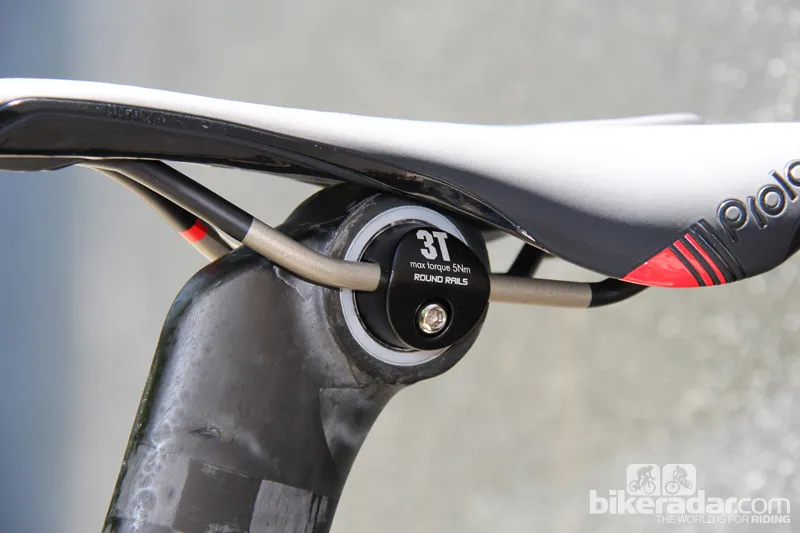
The VR seatpost uses 3T’s DiffLock seat clamp mechanism encased in a thin polymer ring to damp high-frequency road vibration
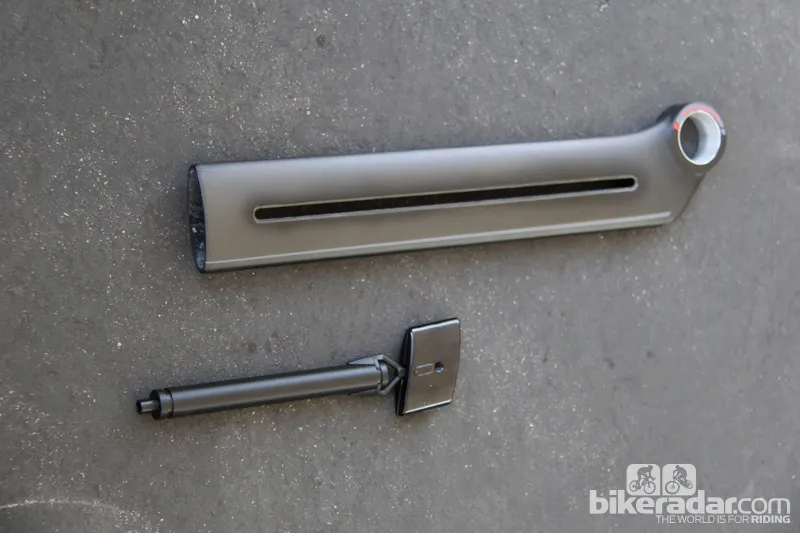
Felt has developed a trick Di2 battery holder for the VariMount seatpost
New aero profiles
The 2014 AR has a new fork design that borrows heavily from Felt’s DA TT/triathlon frameset. The AR now has a twin tail fork design – Felt says it improves the aerodynamic transition from the fork to the down tube, and betters ride quality by dispersing road shock over a larger surface area.
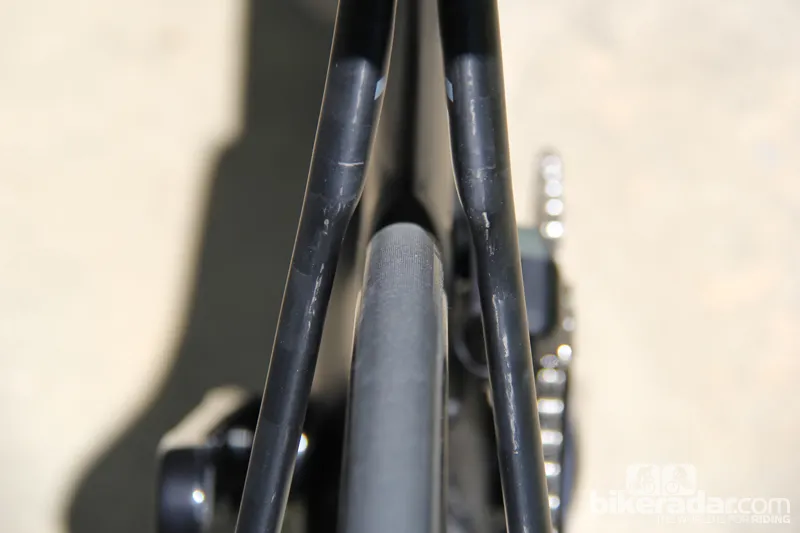
The seatstays get a similar twin tail treatment, possible as the rear brake has been tucked under the chainstays
Pricing
The 2014 AR series will be offered in five complete builds and two frameset options. For more information on Felt bikes see www.feltbicycles.com.
- AR FRD (Di2) – US$12,499;
- AR2 – US$6,199;£4,500.00
- AR3 EPS – US$5,149
- AR4 – US$3,499; £2,499.00
- AR5 – US$2,499; £1,799.00
- Frame kit AR FRD – US$3,999
- Frame kit AR 1 – US$2,499
In the UK the AR will be available in four complete builds:
- AR5 at £1,799 – Shimano 105
- AR4 at £2,199 – Shimano Ultegra 11sp
- AR3R at £3,499 – SRAM Red 22
- AR2 at £4,500 – Ultegra Di2 11sp
The AR FRD and AR1 will be available in the UK as framesets only. Prices are still to be confirmed.
